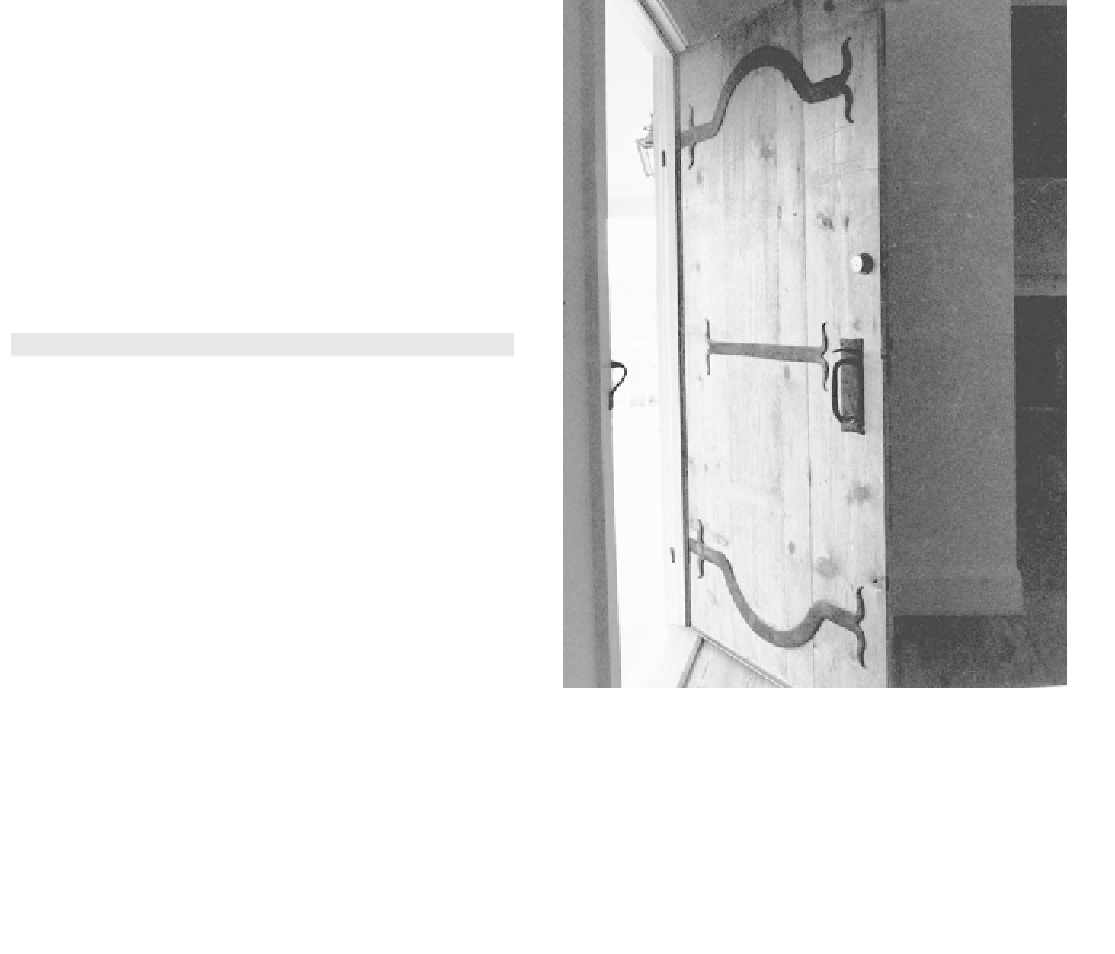Civil Engineering Reference
In-Depth Information
Push fiberglass insulation into any cracks around
door- and window jambs with a putty knife or scraper
to cut out drafts before you install trim. Start the trim
about a inch from the inside of the jamb and set gal-
vanized finish nails with a nail set.
I install trim before I chink, so the mortar can fit
tight to it. If you chink beforehand, you'll find there
are spaces behind your trim you'll want to fill. Cut wire
mesh and force it into these cracks, then push mortar
mix in and smooth against the edge of the trim. You
can use steel wool to take off any mortar stains later.
Doors and windows are a very important example
of your craftsmanship. Very often the impression of
the whole house is created in details such as window
configuration and trim. Spend time on and give atten-
tion to these highly visible details.
Window and Door
Checklist
Choose windows carefully for
compatible looks and energy
efficiency.
Construct your own windows only
if your carpentry skills are up to
the challenge.
Make sure exterior doors are com-
patible with the house's design;
most factory-milled doors aren't.
Use heavy glass, preferably safety
glass, in outside doors.
Seal exterior doors to keep out
moisture.
Try to get recycled salvage doors
for interior use.
Build door- and window jambs
wide enough to match log
thickness.
Insulate around doors and win-
dows before installing trim; chink
after installation.
One of my favorite front doors, of recycled heart white pine from
about 1840. The hinge design repeats the arches on the five dormer
windows on this large house we built in Charlottesville, Virginia.





